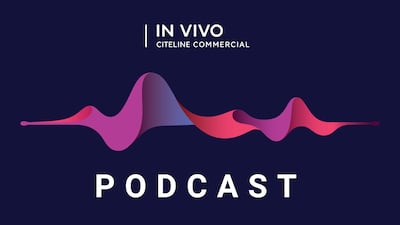Oncolytic viruses are, according to the Evaluate consensus, forecast to have the highest compound average growth rate (CAGR) of any technology over the next six years – with current estimates at 66%. The above data indicates that this therapeutic area will likely experience the most rapid uptake across the market.
Cretostimogene, the predicted fastest growing treatment in oncolytic viruses, is currently forecast to make up 42% of 2030 sales within the treatment space. Led primarily by CG Oncology, Inc., it is currently in Phase III for high-risk non-muscle invasive bladder cancer (NMIBC). It is detailed as an oncolytic immunotherapy that “selectively replicates within cells with an impaired retinoblastoma pathway.” Interim findings presented in May 2024 indicate positive efficacy and safety, with BioMed tracker projecting a 54% likelihood of approval. Full data from the Phase III BOND-003 trial are expected by the end of the year.
CAGR growth for Genome Editing closely follows at 61%, with several products in development or at market level. Accounting for 53% of the 2030 sales within the space, Casgevy is a non-viral gene therapy used to treat beta-thalassemia and sickle cell disease, and the first treatment approved by both the FDA and EMA to utilize CRISPR/Cas9 technology (Also see "Vertex Achieves Gene-Editing Milestone With First Ever CRISPR Therapy Approval" - Scrip, 16 November, 2023.).
According to Evaluate consensus forecasts, Casgevy will hit blockbuster status in 2026 – with nearly 80% of those sales in sickle cells. The drug contains an active substance of genetically modified stem cells, which are taken from the patient's blood and edited to encourage the production of fetal hemoglobin. Before taking Casgevy a patient often receives conditioning chemotherapy to clear their bone marrow of cells. The treatment itself seeks to raise RBC counts and is used in place of stem cell donors, as availability fluctuates.
The three remaining technology groups all fall within a 4% range of one another. Cell therapy sales growth is set to be driven largely by Amtagvi and Ryoncil. The FDA approved Iovance Biotherapeutics, Inc's Amtagvi earlier this year for melanoma treatment (Also see "Iovance Lucks Out With Amtagvi" - Scrip, 19 February, 2024.). Ryoncil, Mesoblast’s graft vs host disease treatment, is also forecast to see impressive growth out to 2030 despite receiving its second complete response letter from the FDA in August 2023 (Also see "Mesoblast Plans Small Trial After Second CRL For GVHD Cell Therapy" - Pink Sheet, 4 August, 2023.).
In the gene therapy space, Sarepta Therapeutics, Inc./Roche Holding AG’s Elevidys is predicted to see the largest growth out to 2030 accounting for 11% of forecast sales, at just over $2bn, treating those with Duchenne Muscular Dystrophy (DMD). However, it should be noted that Elevidy’s sales at currently predicted to peak in 2026 at $2.9bn according to the Evaluate consensus.
DNA and RNA therapies growth potential is supported by several recent and upcoming approvals fromIonis Pharmaceuticals, Inc. and Geron Corporation. However, the largest predicted growth driver between 2024 and 2030 is Alnylam Pharmaceuticals Inc.’s lead asset Amvuttra. Recently published positive Phase III results in amyloidosis with cardiomyopathy which could open up a much larger market if a label expansion is granted. (Also see "Alnylam’s Amvuttra Market May See Tenfold Increase After Phase III Win" - Scrip, 24 June, 2024.)
Turning focus to areas of absolute growth, the above graph presents a large growth for small molecule chemistry in terms of sales, with the technology predicted to grow by nearly $182bn in the next six years. However, this only represents a 6% CAGR across the period. It is interesting to note that the top drivers in terms of dollar value contains five entirely new technologies from those seen in the fastest growers. Although innovative technologies develop rapidly their near-term impact remains low, especially when placed in comparison with established modalities.
Within this area, the drug forecasted to have the largest projection is the JAK1 inhibitor Rinvoq. Developed by AbbVie Inc., this asset has been approved for eight indications thus far including eczema, psoriatic arthritis, Nr-axSpA, Crohn’s disease, rheumatoid arthritis, ankylosing spondylitis and ulcerative colitis. Over the next six years, growth for this product is forecast to be an impressive $6.4bn.
The pharma industry was once fearful that small molecule drugs were going out of fashion due to a rise in favor of biotherapeutics. Yet, data indicates this area will continue to expand with a forecasted growth of $30bn per year, extending out to 2030.
Another notable area of absolute growth is the recombinant antibodies space. Two assets from Amgen, Inc. are currently predicted to have the highest growth across the next six years. Tezspire is a subcutaneous injection forecast to experience $1.9bn in growth by 2030. This product contains the substance tezepelumab, a type of protein that prevents thymic stromal lymphopoietin (TSLP) from attaching to a receptor, and subsequently reducing asthmatic symptoms. The European Medical Association (EMA) has currently authorized for treatment in the EU as the benefits of the product are considered to outweigh any potential risks.
Looking at data from the early 2000s, the space was selling less than $2bn for all its drugs combined. In 2004, small molecule chemistry accounted for 80% of sales, a figure which has consistently fallen since. The recombinant antibody space flourished with launches of drugs likeMerck & Co., Inc.’s Keytruda, Johnson & Johnson’s Darzalex, and AbbVie Inc.’s Skyrizi. It is now forecasted to be the third-largest tech in 2030, predicted to account for 13.76% of total sales, as per the below chart.
The biopharma landscape is constantly changing and developing rapidly. While the small molecule chemistry market is still predicted to account for the highest sales proportion out to forecast horizons, the past couple of decades have shown the potential for drastic shifts of focus across medical innovation. The boost seen in the recombinant antibody space is an example of how impactful new, successful medical technologies can be.
With continued clinical and marketing success the burgeoning technologies shown in this article may also end up as staples of the pharmaceutical treatment landscape.






